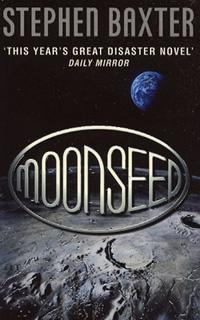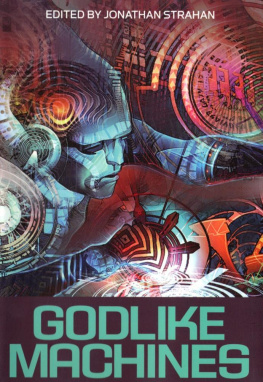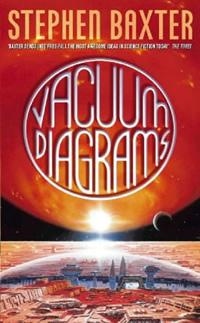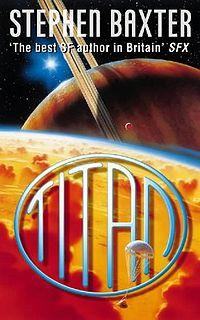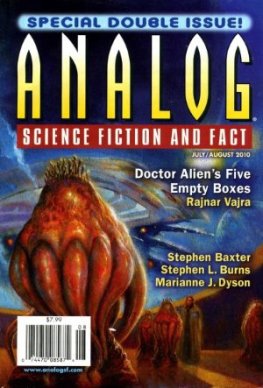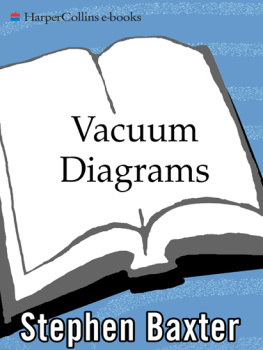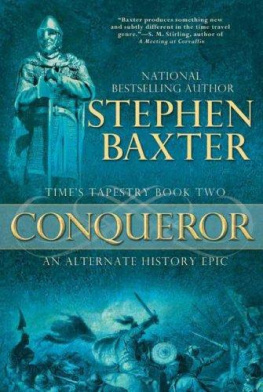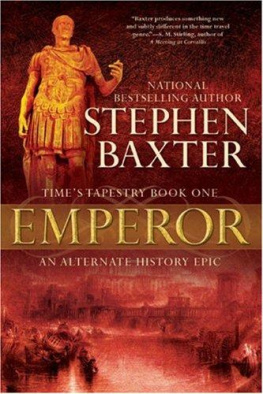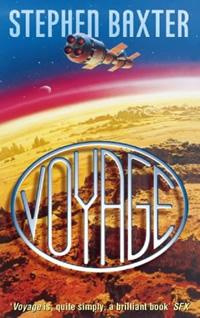Annotation
Stephen Baxter established himself as a major British sci-fi author with tales of exotic, far-future technology. More recently, in Voyage, Titan and now Moonseed, he shows his love for the hardware of the real world's space programme. (Comparisons with Tom Wolfe's The Right Stuff have been frequent.) Moonseed is a spectacular disaster novel whose threat to Earth comes from a long-forgotten Moon rock sample carrying strange silver dust that seems to be alien nanotechnology -- molecule-sized machines. Accidentally spilt in Edinburgh, this 'Moonseed' quietly devours stone and processes it into more Moonseed. Geology becomes high drama: when ancient mountains turn to dust, the lid is taken off seething magma below. Volcanoes return to Scotland, and Krakatoa-like eruptions spread Moonseed around the world. A desperate, improvised US/Russian space mission heads for the Moon to probe the secret of how our satellite has survived uneaten. Baxter convincingly shows how travel costs could be cut, with a hair-raising descent on a shoestring lunar lander that makes Apollo's look like a luxury craft. The climax brings literally world-shaking revelations and upheavals. Moonseed is a ripping interplanetary yarn.
Moonseed
by Stephen Baxter
For Sandra, with all my love
DRAMATIS PERSONAE
Henry Meacher, geologist, NASA
Geena Bourne, Space Station astronaut
Jane Dundas, shopkeeper
Arkady Berezovoy, Space Station astronaut
GREAT BRITAIN
EDINBURGH:
Jack Dundas, son of Jane
Mike Dundas, technician
Ted Dundas, retired police officer
Ruth Clark, neighbour of Ted Dundas
Hamish Macrae, aka Bran, cult leader
Billy Macrae, brother of Hamish
Alan Macrae, father of Hamish
Dan McDiarmid, geologist, Edinburgh University
Marge Case, geologist, Edinburgh University
Constable Morag Decker, police officer
Blue Ishiguro, geologist, USGS
William MacEwen, police superintendent
Paula Romano, Chief Constable
Archie Ferguson, Emergency Planning Officer
Janice Docherty, hospital patient
Siobhan Reader, Musselburgh Rest Centre manager
OTHER:
Bob Fames, Prime Minister
Dave Holland, Environment Secretary
Indira Bhide, Home Secretary
Debbie Sturrock, firefighter, Dunbar
William Calder, Jackie Brown, rig workers
Jenny Calder, wife to William
UNITED STATES
NASA:
Jays Malone, Apollo astronaut
Tom Barber, Apollo astronaut
Tracy Malone, daughter to Jays
Harry Maddicott, JSC director
Sixt Guth, Space Station astronaut
Bonnie Jones, Space Station astronaut
Frank Turtle, engineer, JSC Solar System Exploration Division
OTHER:
Monica Beus, physicist
Alfred Synge, astronomer
Scott Coplon, geologist, US Geological Survey
Joely Stern, e-zine journalist
Cecilia Stanley, e-zine editor
David Petit, chemist, Nobel Prize Winner
Admiral Joan Bromwich, Vice Chairman of Joint Chiefs of Staff
Garry Beus, son of Monica, USAF pilot
Jake Parrish, USAF pilot
JAPAN
Declan Hague, monk
LUNAR FEDERAL REPUBLIC:
Nadezhda Pour-El Meacher Dundas, astronaut
PART I
BIG WHACK
It began in a moment of unimaginable violence, five billion years before humans walked the Earth.
There was a cloud, of gas and dust, slowly spinning. Much of it was the hydrogen and helium which had emerged from the Big Bang itself, but it was tainted by crystals of ice -- ammonia, water and methane -- and dust motes rich in iron, magnesium and silica, even some grains of pure metal. These were flotsam from older stars, stars already dead.
...And now another star died, a giant, in the conclusive spasm of supernova. A flood of energy and matter hammered into the cloud.
The cloud lost its stability, and began to collapse, to a spinning disc. The central mass shone cherry red, then gradually brightened to white, until -- after a hundred million years -- it burst into fusion life.
It was the protostar which would become the sun.
Within the disc, solid panicles began to crystallize. There were grains of rock -- silicate minerals called olivines and pyroxenes -- and minerals of iron and nickel, kamacite and taenite. The particles, stuck together by melting ice, formed planetesimals, muddy lumps which swarmed on looping, irregular orbits around the sun.
The planetesimals collided.
Where an impact was head-on, the worldlets could be shattered. But where the collisions were gentle, the worldlets could nudge into each other, stick together, merge. Soon, some aggregations were large enough to draw in their smaller companions.
Thus, young Earth: a chaotic mixture of silicates, metals and trapped gases, cruising like a hungry shark in a thinning ring of worldlets.
Earth's bulk was warm, for the heat of accumulation and of supernova radioactive decay was trapped inside. The metals, heavier than the silicates, sank to the centre, and around the new, hot core, a rocky mantle gathered. Gases trapped in the core were driven out, and formed Earth's first atmosphere: a massive layer of hydrogen, helium, methane, water, nitrogen and other gases, amounting to ten per cent of Earth's total mass.
Earth's evolution continued, busily, logically.
But something massive was approaching.
"Look up, Tracy. Look at the Moon. You know, we take that damn thing for granted. But if it suddenly appeared in the sky, if it was Mercury hauled up here from the centre of the Solar System, my gosh, it would be the story of the century..."
It was 1973.
Her father, Jays, had been back from the Moon only a couple of months. Tracy Malone, ten years old, thought he'd come back... different.
"Look up," he said again, and she obeyed, turning from his face to the Moon.
The face of the Man in the Moon glared down at Tracy. It was a composition of grey and white, flat and unchanging, hanging like a lantern in the muggy Houston sky.
"The Moon looks like a disc," said her father, in his stiff schoolteacher way. "But it isn't. That's an optical illusion. It's a rocky world, a ball. You know that, don't you, sweet pea?"
Of course I know that. "Yes, Dad."
"People used to think the Moon was like the Earth. They gave those dark grey patches the names of oceans. Well, now we know they are seas of frozen lava. Think about that. And those brighter areas are the highlands, rocky and old. Now, look for the Man's right eye: you see it? That distinct circle? That's what we call the Mare Imbrium. It's actually one huge crater, big enough to swallow Texas. It was gouged out by a gigantic meteorite impact almost four billion years ago. What a sight that must have been."
"But there was nobody around to watch it. Not even the dinosaurs."
"That's right. And then, much later, it got flooded with basalt--"
"Where did Neil Armstrong land?"
"Look for the Man's left eye. See the way it's sort of sad and drooping? Follow that eye down and you come to Mare Tranquillitatis."

